#benjamin jacobson
Explore tagged Tumblr posts
Text


A Season for Family
#a season for family#hallmark#hallmark movies and mysteries#brendan penny#stacey farber#azriel dalman#benjamin jacobson#2023#miracles of christmas 2023
4 notes
·
View notes
Text








selfies from natasha are a blessing
20 notes
·
View notes
Text
youtube
Fran Drescher want to do something special for the nanny
#Fran Drescher want to do#something special for the nanny#the nanny 30th anniversary#fran drescher#fran fine#nanny fine#the nanny#charles shaughnessy#Renee Taylor#Lauren Lane#daniel davis#Peter Marc Jacobson#Benjamin Salisbury#Madeline Zima#Nicholle Tom#recap#tv show#youtube#network#comment#likes#subscribe
1 note
·
View note
Text
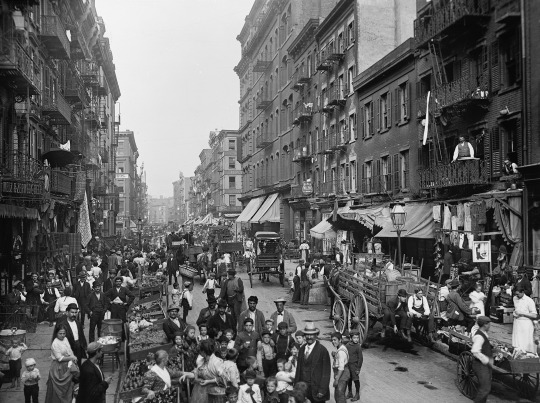
How Italians Became ‘White’
Congress envisioned a white, Protestant and culturally homogeneous America when it declared in 1790 that only “free white persons, who have, or shall migrate into the United States” were eligible to become naturalized citizens. The calculus of racism underwent swift revision when waves of culturally diverse immigrants from the far corners of Europe changed the face of the country.
As the historian Matthew Frye Jacobson shows in his immigrant history “Whiteness of a Different Color,” the surge of newcomers engendered a national panic and led Americans to adopt a more restrictive, politicized view of how whiteness was to be allocated. Journalists, politicians, social scientists and immigration officials embraced the habit, separating ostensibly white Europeans into “races.” Some were designated “whiter” — and more worthy of citizenship — than others, while some were ranked as too close to blackness to be socially redeemable. The story of how Italian immigrants went from racialized pariah status in the 19th century to white Americans in good standing in the 20th offers a window onto the alchemy through which race is constructed in the United States, and how racial hierarchies can sometimes change.
Darker skinned southern Italians endured the penalties of blackness on both sides of the Atlantic. In Italy, Northerners had long held that Southerners — particularly Sicilians — were an “uncivilized” and racially inferior people, too obviously African to be part of Europe.
Racist dogma about Southern Italians found fertile soil in the United States. As the historian Jennifer Guglielmo writes, the newcomers encountered waves of books, magazines and newspapers that “bombarded Americans with images of Italians as racially suspect.” They were sometimes shut out of schools, movie houses and labor unions, or consigned to church pews set aside for black people. They were described in the press as “swarthy,” “kinky haired” members of a criminal race and derided in the streets with epithets like “dago,” “guinea” — a term of derision applied to enslaved Africans and their descendants — and more familiarly racist insults like “white nigger” and “nigger wop.”

The penalties of blackness went well beyond name-calling in the apartheid South. Italians who had come to the country as “free white persons” were often marked as black because they accepted “black” jobs in the Louisiana sugar fields or because they chose to live among African-Americans. This left them vulnerable to marauding mobs like the ones that hanged, shot, dismembered or burned alive thousands of black men, women and children across the South.
The federal holiday honoring the Italian explorer Christopher Columbus — celebrated on Monday — was central to the process through which Italian-Americans were fully ratified as white during the 20th century. The rationale for the holiday was steeped in myth, and allowed Italian-Americans to write a laudatory portrait of themselves into the civic record.
Few who march in Columbus Day parades or recount the tale of Columbus’s voyage from Europe to the New World are aware of how the holiday came about or that President Benjamin Harrison proclaimed it as a one-time national celebration in 1892 — in the wake of a bloody New Orleans lynching that took the lives of 11 Italian immigrants. The proclamation was part of a broader attempt to quiet outrage among Italian-Americans, and a diplomatic blowup over the murders that brought Italy and the United States to the brink of war.
Historians have recently showed that America’s dishonorable response to this barbaric event was partly conditioned by racist stereotypes about Italians promulgated in Northern newspapers like The Times. A striking analysis by Charles Seguin, a sociologist at Pennsylvania State University, and Sabrina Nardin, a doctoral student at the University of Arizona, shows that the protests lodged by the Italian government inspired something that had failed to coalesce around the brave African-American newspaper editor and anti-lynching campaigner Ida B. Wells — a broad anti-lynching effort.
A Black ‘Brute’ Lynched
The lynchings of Italians came at a time when newspapers in the South had established the gory convention of advertising the far more numerous public murders of African-Americans in advance — to attract large crowds — and justifying the killings by labeling the victims “brutes,” “fiends,” “ravishers,” “born criminals” or “troublesome Negroes.” Even high-minded news organizations that claimed to abhor the practice legitimized lynching by trafficking in racist stereotypes about its victims.
As Mr. Seguin recently showed, many Northern newspapers were “just as complicit” in justifying mob violence as their Southern counterparts. For its part, The Times made repeated use of the headline “A Brutal Negro Lynched,” presuming the victims’ guilt and branding them as congenital criminals. Lynchings of black men in the South were often based on fabricated accusations of sexual assault. As the Equal Justice Initiative explained in its 2015 report on lynching in America, a rape charge could occur in the absence of an actual victim and might arise from minor violations of the social code — like complimenting a white woman on her appearance or even bumping into her on the street.
The Times was not owned by the family that controls it today when it dismissed Ida B. Wells as a “slanderous and nasty-minded mulattress” for rightly describing rape allegations as “a thread bare lie” that Southerners used against black men who had consensual sexual relationships with white women. Nevertheless, as a Times editorialist of nearly 30 years standing — and a student of the institution’s history — I am outraged and appalled by the nakedly racist treatment my 19th-century predecessors displayed in writing about African-Americans and Italian immigrants.
When Wells took her anti-lynching campaign to England in the 1890s, Times editors rebuked her for representing “black brutes” abroad in an editorial that joked about what they described as “the practice of roasting Negro ravishers alive and boring out their eyes with red-hot pokers.” The editorial slandered African-Americans generally, referring to rape as “a crime to which Negroes are particularly prone.” The Times editors may have lodged objections to lynching — but they did so in a rhetoric firmly rooted in white supremacy.
‘Assassins by Nature’
Italian immigrants were welcomed into Louisiana after the Civil War, when the planter class was in desperate need of cheap labor to replace newly emancipated black people, who were leaving backbreaking jobs in the fields for more gainful employment.
These Italians seemed at first to be the answer to both the labor shortage and the increasingly pressing quest for settlers who would support white domination in the emerging Jim Crow state. Louisiana’s romance with Italian labor began to sour when the new immigrants balked at low wages and dismal working conditions.
The newcomers also chose to live together in Italian neighborhoods, where they spoke their native tongue, preserved Italian customs and developed successful businesses that catered to African-Americans, with whom they fraternized and intermarried. In time, this proximity to blackness would lead white Southerners to view Sicilians, in particular, as not fully white and to see them as eligible for persecution — including lynching — that had customarily been imposed on African-Americans.

https://static01.nyt.com/newsgraphics/2019/10/10/srw1011-staplesgallery/4792c59ca6f516c487b724c1c77fd4899b3050d3/photo_cat.jpg
Nevertheless, as the historian Jessica Barbata Jackson showed recently in the journal Louisiana History, Italian newcomers were still well thought of in New Orleans in the 1870s when negative stereotypes were being established in the Northern press.
The Times, for instance, described them as bandits and members of the criminal classes who were “wretchedly poor and unskilled,” “starving and wholly destitute.” The stereotype about inborn criminality is plainly evident in an 1874 story about Italian immigrants seeking vaccinations that refers to one immigrant as a “burly fellow, whose appearance was like that of the traditional brigand of the Abruzzi.”
A Times story in 1880 described immigrants, including Italians, as “links in a descending chain of evolution.” These characterizations reached a defamatory crescendo in an 1882 editorial that appeared under the headline “Our Future Citizens.” The editors wrote:
“There has never been since New York was founded so low and ignorant a class among the immigrants who poured in here as the Southern Italians who have been crowding our docks during the past year.”
The editors reserved their worst invective for Italian immigrant children, whom they described as “utterly unfit — ragged, filthy, and verminous as they were — to be placed in the public primary schools among the decent children of American mechanics.”
The racist myth that African-Americans and Sicilians were both innately criminal drove an 1887 Times story about a lynching victim in Mississippi whose name was given as “Dago Joe” — “dago” being a slur directed at Italian and Spanish-speaking immigrants. The victim was described as a “half breed” who “was the son of a Sicilian father and a mulatto mother, and had the worst characteristics of both races in his makeup. He was cunning, treacherous and cruel, and was regarded in the community where he lived as an assassin by nature.”
Sicilians as ‘Rattlesnakes’
The carnage in New Orleans was set in motion in the fall of 1890, when the city’s popular police chief, David Hennessy, was assassinated on his way home one evening. Hennessy had no shortage of enemies. The historian John V. Baiamonte Jr. writes that he had once been tried for murder in connection with the killing of a professional rival. He is also said to have been involved in a feud between two Italian businessmen. On the strength of a clearly suspect witness who claimed to hear Mr. Hennessy say that “dagoes” had shot him, the city charged 19 Italians with complicity in the chief’s murder.
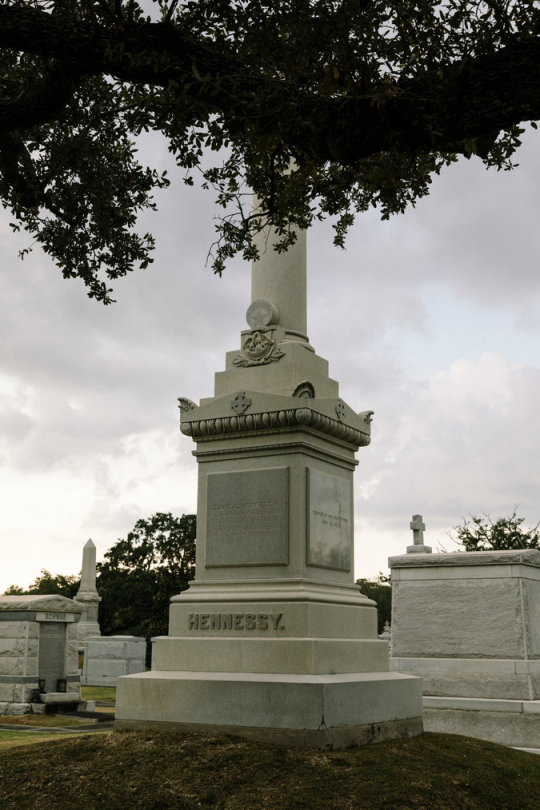
The monument to David Hennessy rises above nearly all the other tombs in Metairie Cemetery in New Orleans.William Widmer for The New York Times
That the evidence was distressingly weak was evident from the verdicts that were swiftly handed down: Of the first nine to be tried, six were acquitted; three others were granted mistrials. The leaders of the mob that then went after them advertised their plans in advance, knowing full well that the city’s elites — who coveted the businesses the Italians had built or hated the Italians for fraternizing with African-Americans — would never seek justice for the dead. After the lynching, a grand jury investigation pronounced the killings praiseworthy, turning that inquiry into what the historian Barbara Botein describes as “possibly one of the greatest whitewashes in American history.”
The blood of the New Orleans victims was scarcely dry when The Times published a cheerleading news story — “Chief Hennessy Avenged: Eleven of his Italian Assassins Lynched by a Mob” — that reveled in the bloody details. It reported that the mob had consisted “mostly of the best element” of New Orleans society. The following day, a scabrous Times editorial justified the lynching — and dehumanized the dead, with by-now-familiar racist stereotypes.
“These sneaking and cowardly Sicilians,” the editors wrote, “the descendants of bandits and assassins, who have transported to this country the lawless passions, the cutthroat practices … are to us a pest without mitigations. Our own rattlesnakes are as good citizens as they. Our own murderers are men of feeling and nobility compared to them.” The editors concluded of the lynching that it would be difficult to find “one individual who would confess that privately he deplores it very much.”

Lynchers in 1891 storming the New Orleans city jail, where they killed 11 Italian-Americans accused in the fatal shooting of Chief Hennessy.Italian Tribune
President Harrison would have ignored the New Orleans carnage had the victims been black. But the Italian government made that impossible. It broke off diplomatic relations and demanded an indemnity that the Harrison administration paid. Harrison even called on Congress in his 1891 State of the Union to protect foreign nationals — though not black Americans — from mob violence.
Harrison’s Columbus Day proclamation in 1892 opened the door for Italian-Americans to write themselves into the American origin story, in a fashion that piled myth upon myth. As the historian Danielle Battisti shows in “Whom We Shall Welcome,” they rewrote history by casting Columbus as “the first immigrant” — even though he never set foot in North America and never immigrated anywhere (except possibly to Spain), and even though the United States did not exist as a nation during his 15th-century voyage. The mythologizing, carried out over many decades, granted Italian-Americans “a formative role in the nation-building narrative.” It also tied Italian-Americans closely to the paternalistic assertion, still heard today, that Columbus “discovered” a continent that was already inhabited by Native Americans.
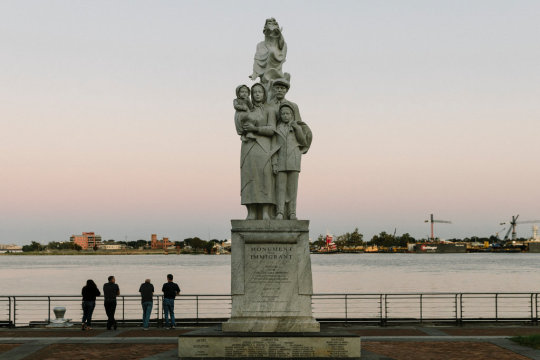
The “Monument to the Immigrant,” commissioned by the Italian American Marching Club of New Orleans, stands along the Mississippi River in Woldenberg Park.William Widmer for The New York Times
But in the late 19th century, the full-blown Columbus myth was yet to come. The New Orleans lynching solidified a defamatory view of Italians generally, and Sicilians in particular, as irredeemable criminals who represented a danger to the nation. The influential anti-immigrant racist Representative Henry Cabot Lodge of Massachusetts, soon to join the United States Senate, quickly appropriated the event. He argued that a lack of confidence in juries, not mob violence, had been the real problem in New Orleans. “Lawlessness and lynching are evil things,” he wrote, “but a popular belief that juries cannot be trusted is even worse.”
Facts aside, Lodge argued, beliefs about immigrants were in themselves sufficient to warrant higher barriers to immigration. Congress ratified that notion during the 1920s, curtailing Italian immigration on racial grounds, even though Italians were legally white, with all of the rights whiteness entailed.
The Italian-Americans who labored in the campaign that overturned racist immigration restrictions in 1965 used the romantic fictions built up around Columbus to political advantage. This shows yet again how racial categories that people mistakenly view as matters of biology grow out of highly politicized myth making.

#italians#sicily italy#wop#african#afrakan#kemetic dreams#brownskin#afrakans#africans#brown skin#congress#new orleans lynching#new orleans#massachusetts#european#europeans#how italians became white#becoming white#white people#white#white culture#western europe
116 notes
·
View notes
Text

Bisan Owda is a journalist in Gaza that keeps updating about the barbaric genocide actions that israel committed with weapons supplied mainly by US, all the while living through that genocide itself.
Over 30k+ has been killed, and over 15k+ of those are children and babies.
The celebs and artists who wanted to rescind Bisan's nomination are as follow:

Ari Ingel, Executive Director, Creative Community for Peace
David Renzer, Former Chairman/CEO Universal Music Publishing Group, CCFP Chairman & Co-Founder
Steve Schnur, Worldwide Executive & Music President, Electronic Arts, CCFP Co-Founder
Rakefet Abergel, Actor/Director, Cyclamen Films
Orly Adelson, Former President of ITV Studios, America
Marty Adelstein, CEO, Tomorrow Studios
Anne-Marie Asner, Co-Founder, Animation Israel
Jeff Astrof, TV Producer/Showrunner, Other Shoe Productions
Michael Auerbach, Partner, Jackoway Austen Tyerman Wertheimer Mandelbaum Morris Bernstein Trattner Auerbach Hynick Jaime LeVine Sample & Klein
Dean Bahat, Attorney, Ziffren Brittenham
Andrea Ballas, VP Comms, CBS
Jackie Barrie, A&R Manager, Nvak Collective
Richard Baskind, Partner & Head of Music, Simons Muirhead & Burton
Aton Ben-Horin, Executive VP of Global A&R, Atlantic Records Group
Steven Bensusan, President, Blue Note Entertainment Group
Adam Berkowitz, Founder and President, Lenore Entertainment Group
Sharon Bialy, Casting Director, Bialy/Thomas & Associates
Josh Binder, Co-Founder and Partner, Rothenberg Mohr & Binder, LLP
Neil Blair, Founding Partner, The Blair Partnership
Selma Blair, Actress, Author, Advocate, Sainted Productions
Rebecca Blumberg, SVP Ad Sales, Paramount
Evan Bogart, Songwriter & CEO, Seeker Music
Benjamin Budde, CEO, Budde Group GmbH
Bruce Burger, Producer, RebbeSoul
David Byrnes, Attorney, Ziffren Brittenham
Civia Caroline, Social Impact Consultant, CLiC Impact
Pamela Charbit, Director of A&R, Warner Music Group
Emmanuelle Chriqui, Actor, Yellow Ray Entertainment
Leanne Coronel, Talent Manager, The Coronel Group
Raye Cosbert, Managing Director, Metropolis Musi
Paul Craig, Ceo, Nostromo Management
Doug Davis, NATAS Member, 2x Emmy winner, The Davis Firm
Rebecca De Mornay, Actor
Jamie Denbo, Co-Executive Producer, Grey’s Anatomy, ABC/Disney
Josh Deutsch, Chairman/CEO, Premier Music Group
Avi Diamond, Director, Film/TV Sync, Warner Music Canada
Craig Dorfman, President and Owner, Frontline MGMT
Rachel Douglas, Manager, Range Media Partners
David Draiman, Frontman, Disturbed
Jeremy Drysdale, Screenwriter, bigbamboo
Craig Emanuel, Ryan Murphy Productions
Hannah Epstein, Agent, CAA
Rami “Kosha dillz” Even-Esh, Rapper/Comic/Actor
Lindsay Fabes, Actor
Ron Fair, Record Producer & CEO, Faircraft Inc.
Sharon Farber, Composer, Score by Score Music
Danny Federman, Owner, Maccabi Tel Aviv Basketball Club
Eric Feig, Attorney and TV Academy Member, Feig/Finkel
Patti Felker, Attorney, Felker Toczek Suddleson McGinnis Ryan LLP
Ken Fermaglich, Partner, United Talent Agency
Ross “Remedy” Filler, Artist
Shalom Fisch, President, MediaKidz Research & Consulting
David Fishof, CEO, RRFC Films, LLC
Siri Garber, Publicist, Platform
David Gardner, President, Artists First
Barbara Garshman, CEO, Garshman Productions LLC
Gary Gersh
Gary Ginsberg, Senior VP, SoftBank Group Corp.
Brian Ralston, Composer/Producer, Studio 74 Music, LLC
David Glick, Founder & CEO, Edge Group
Zusha Goldin, Celebrity Photographer, Zusha Goldin
Michael Goldwasser, President, Easy Star Records
Andrew Gould, President, Music Publishing
Scott Greenberg, Partner, LBI
Steven Greenberg, Founder and President, S-Curve Records
Daniel Grindlinger, Writer
Ronnie Harris, Partner, Harris & Trotter
Michael Hirschhorn, Manager, Streaming and Sales, Atlantic Records
Linda Edell Howard, Attorney, Novick Law
Rich Ingram, Artist/Creator
Neil Jacobson, Former President, Geffen Records, Founder & CEO of Hallwood Media
Michael Kaplan, Writer/Producer
Sam Katz, Music Manager, Homebase MGMT, LLC
Zach Katz, CEO & Co-Founder, Fixated
Ketura Kestin, Film Producer, Serendipity Productions
Amanda Kogan, Manager, Aaron Kogan Management
Keetgi Kogan Steinberg, Writer/Producer/Showrunner
Jason Kozel, Creative Executive, Range Media Partners
Rick Krim, CEO, Krim Music + Media
Evan Lamberg, President, North America, Universal Music Publishing Group
Sherry Lansing, Former CEO, Paramount Pictures
Colin Lester OBE, Founder/Chairman, JEM Music Group
Sean Liebowitz, Agent
Koura Linda, Founder & CEO, Space Dream Productions
Marci Liroff, Intimacy Coordinator/Casting Director
Cory Litwin, Managing Partner, Range Media Partners
David Lonner, CEO, The David Lonner Company
Ben Maddahi, President, Unrestricted Publishing & Mgmt
Gabriel Mann, Composer
Deborah Marcus, Executive, CAA Foundation
Susan Markheim, Full Stop Mgt., The Azoff Company
Amanda Markowitz, Actor/Producer, SAG/AFTRA & PGA
Orly Marley, President, Tuff Gong Worldwide
Devra Maza, Screenwriter
Debra Messing, Actor/Producer
Hilary Michael, Agent and Partner, WME
Beth Milstein, Writer
Jennifer Morrow, Actor, CAA
Patrick Moss, Writer, Moroccan Boychik
Robert Munic, Writer/Showrunner, Pull The Pin Productions, Inc.
Lisa Nupoff, Manager, iminmusic management
Scott Packman, Founder and Managing Member, SSP Partners LLC
Mark Pinkus, President, Rhino Records
Jonah Platt, Actor/Producer
Wendy Plaut, SVP Music & Celebrity Talent, Paramount Global
Jessica Poter, Writer, Gustavo Anibal Productions
Golan Ramraz, Writer/Producer, EGX Film Factory
Bruce Resnikof
Frederic Richter, Producer, Writer & Researcher
Wendy Robbins, Executive Producer, Creators Inc
Dan Rosen, President, Warner Music Australasia
Rick Rosen, Co-Founder, Endeavor, WME
Aaron Rosenberg, Partner, Myman Greenspan Fox Rosenberg Mobasser Younger & Light
Gregg Rossen, Screenwriter
Michael Rotenberg, CEO, 3 Arts Entertainment
Joshua Rothstein, CEO/Founder, Ice Cream For Dinner
Haim Saban, Chairman and CEO, Saban Capital Group
Glenn Sanders, Writer/Director/Creative Director, Masonry Creative
Ayelet Schiffman, SVP Head of Promotions, Island Records
Paul Schindler, Senior Partner, Greenberg Traurig LLC
Jordan Schur, CEO and Chairman, Mimran Schur Pictures and Suretone Entertainment
Adam Schwartz, Writer
Sam Schwartz, Partner, Gorfaine/Schwartz Agency
Jay Schweid, Founder/CEO, ephelants/Village
Adam Segal, President, The 2050 Group
Ben Silverman, Chairman and Co-CEO, Propagate Content
Ralph Simon, Chairman & Chief Executive Officer, Mobilium Global Limited
Tamar Simon, Owner/CEO, Mean Streets Management
Martin Singer, Attorney, Lavely and Singer
Halle Stanford, President of Television, The Jim Henson Company
Mimi Steinberg, Writer/Producer
Jonathan Steinsapir, Partner, Kinsella Holley Iser Kump Steinsapir
Gary Stiffelman, Founder, GSS Law
Traci Symanski, CEO, Co-Star Entertainment
Aaron Symonds, Film Composer
Fernando Szew, President, Fox Entertainment
Tal Tavin, Actor
Adam Taylor, President, APM Music
Michael Testa, Casting Director, Michael Testa Casting
Fred Toczek, Partner, Felker Toczek Suddleson Abramson McGinnis Ryan LLP
Eric Tuchman, Writer/Producer, MGM-TV
Noa Vinshtok, Streaming, Range Media Partners
Joshua Washington, International Recording Artist, JoDavi Music LLC
Avi Weider, Filmmaker, Loop Filmworks
Jon Weinbach, President, Skydance Sports
Nola Weinstein, Tech Executive
Ilana Wernick, Writer/Producer, Fox
Modi Wiczyk, Co-Founder, MRC
Evan Winiker, Managing Partner, Range Music
Seth Yanklewitz, Casting Director, Yanklewitz Pollack Casting
Sharon Tal Yguado, Founder & CEO, Astrid Entertainment
Ky Zaretsky, Manager, Range Media Partners
David Zedeck, Global Co-Head of Music
[Sources: here, here, and here]
#palestine#from the river to the sea palestine will be free#gaza#free gaza#save palestine#palestine news#free palestine#palestinian genocide#gaza news#gaza genocide#stop genocide#genocide#stop the genocide#emmys#emmy awards#america#usa news#usa#celebrities#hot celebs#celebs#celebrity#sexy celeb#taylor swift#taylorswift#ariana grande#arianator#swifties
9 notes
·
View notes
Text















The Lost Room - SyFy Channel - December `11 - 13, 2006
Supernatural / Mystery (3 episodes)
Running Time: 262 minutes Total
Stars:
Peter Krause as Detective Joe Miller
Elle Fanning as Anna Miller
Chris Bauer as Detective Lou Destefano
April Grace as Detective Lee Bridgewater
Dennis Christopher as Dr. Martin Ruber
Julianna Margulies as Jennifer Bloom
Kevin Pollak as Karl Kreutzfeld
Peter Jacobson as Wally Jabrowski
Ewen Bremner as Harold Stritzke
Roger Bart as Howard "The Weasel" Montague
Chris McCarty as Milton Vrang
Margaret Cho as Suzie Kang
Jason Antoon as The Sood
Jason Douglas as Anthony
Hugo Perez as Pumeet
Tim Guinee as The Occupant, formerly Eddie McCleister
Jorge Pallo as Ignacio "Iggy" Loca
Ann Cusack as Helen Ruber
Harriet Sansom Harris as Margaret Milne
Benjamin Petrie as Isaac Kreutzfeld
Chris Monberg as Little Jim
Nicholas Guilak as Arjun Mehta
#The Lost Room#TV#SyFy Channel#2000's#2006#Supernatural#History#Peter Krause#Elle Fanning#Dennis Christopher#Julianna Marguiles#Kevin Pollack#Peter Jacobson
13 notes
·
View notes
Text


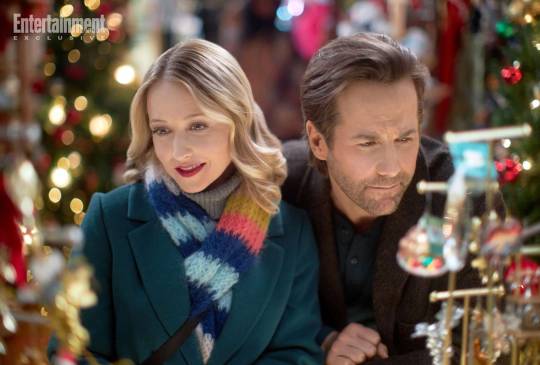
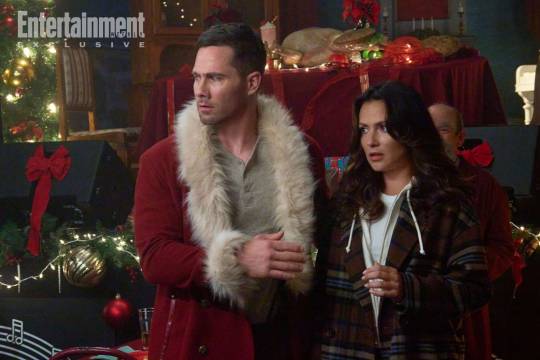


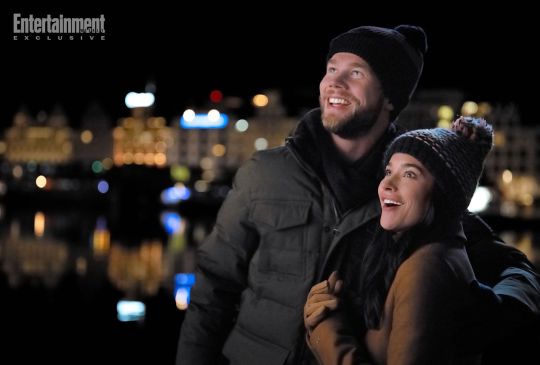



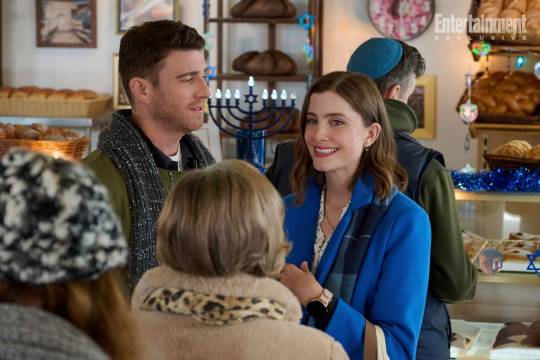
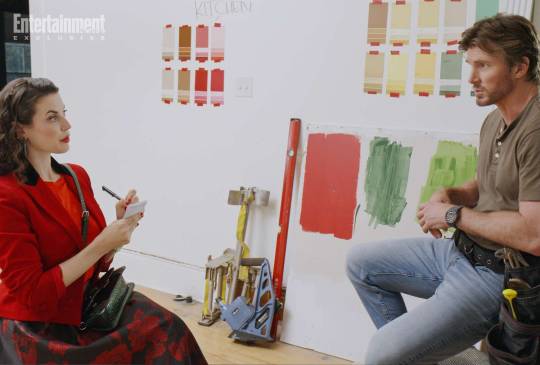




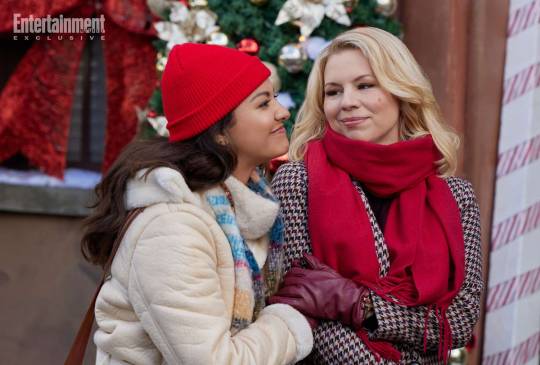
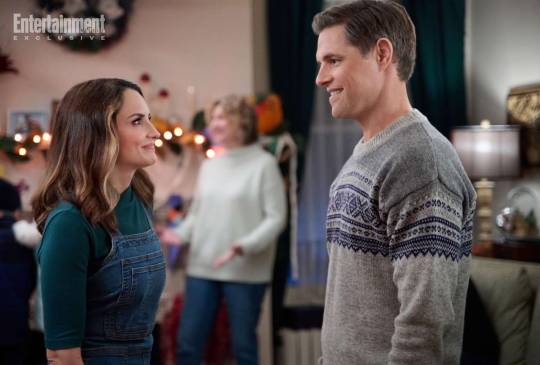



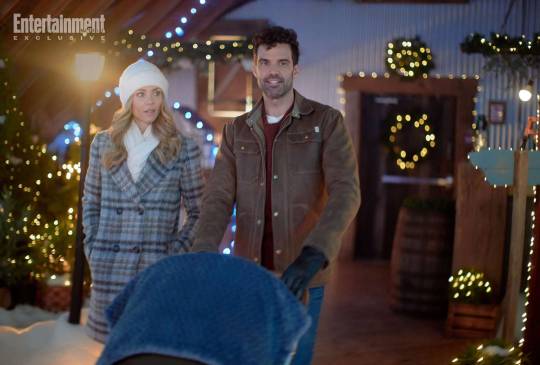
New photos for Entertainment Weekly preview article.
LINK
Hallmark Channel - Countdown to Christmas
1 - Where Are You, Christmas? (Michael Rad & Lyndsy Fonseca) 2 - Christmas Island (Rachel Skarsten & Andrew Walker) 3 - Holiday Hotline (Emily Tennant & Niall Matter) 4 - Catch Me If You Claus (Luke Macfarlane & Italia Ricci) 5 - Holiday Road (Princess Davis, Enid-Raye Adams, Warren Christie, Brittany Willacy, Sara Canning, Kiefer O’Reilly, Sharon Crandall, Ryan Mah, & Trevor Lerner) 6 - Our Christmas Mural (Dan Jeannotte & Alex Paxton-Beesley) 7 - My Norwegian Holiday (David Elsendoorn & Rhiannon Fish) 8 - A Not So Royal Christmas (Brooke D'Orsay & Will Kemp) 9 - Christmas With a Kiss (Jamie M. Callica & Mishael Morgan) 10 - Magic in Mistletoe (Lyndie Greenwood & Paul Campbell) 11 - Round and Round (Bryan Greenberg & Vic Michaelis) 12 - The Secret Gift of Christmas (Mehghan Try & Christopher Russell) 13/14/15 - Christmas on Cherry Lane (Vincent Rodriquez III, Jonathan Bebbett, John Brotherton, Erin Cahill, Catherine Bell & James Denton) 16 - Sealed With a Lis (Katie Findlay & Evan Roderick) 17 - Friends & Family Christmas (Humbly Gonzalez & Ali Liebert)
Hallmark Movies Now
18 - Rescuing Christmas (Rachel Leigh Cook & Sam Page)
Hallmark Movies & Mysteries
19 - Mystery on Mistletoe Lane (Victor Webster & Erica Cerra) 20 - To All a Good Night (Kimberly Sustad & Mark Ghanimé) 21 - A Season For Family (Laura Soltis, Cameron Bancroft , Brendan Penny, Stacey Faber, Azriel Dalman, and Benjamin Jacobson) 22 - Miracle in Bethlehem, PA (Laura Vandervoort & Benjamin Ayres)
#first look#photo preview#hallmark movies#link#where are you christmas#christmas island#holiday hotline#catch me if you claus#holiday road#our christmas mural#my norwegian holiday#a not so royal christmas#christmas with a kiss#magic in mistletoe#round and round#the secret gift of christmas#christmas on cherry lane#sealed with a list#friends & family christmas#countdown to christmas#hallmark channel#rescuing christmas#hallmark movies now#mystery on mistletoe lane#to all a good night#a season for family#miracle in bethlehem pa#miracles of christmas#hallmark movies & mysteries
17 notes
·
View notes
Text
The Stuff I Read in June/July 2023
Stuff I Extra Liked is Bold
I forgot to do it last month so you get a double feature
Books
Ninefox Gambit, Yoon Ha Lee
Heteropessimism (Essay Cluster)
The Biological Mind, Justin Garson (2015) Ch. 5-7
Sacred and Terrible Air, Robert Kurvitz
Wage Labour and Capital, Karl Marx
Short Fiction
Beware the Bite of the Were-Lesbian (zine), H. C. Guinevere
Childhood Homes (and why we hate them) by qrowscant (itch.io)
piele by slugzuki (itch.io)
بچ��ای که شکل گربه میکشید، لافکادیو هرن
بچه های که یخ نزدند، ماکسیم گورکی
پسرکی در تعقیب تبهکار، ویلیام آیریش
Küçük Kara Balık, Samed Behrengi
Phil Mind
The Hornswoggle Problem, Patricia Churchland, Journal of Consciousness Studies 3.5-6 (1996): 402-408
What is it Like to be a Bat? Thomas Nagel, (https://doi.org/10.4159/harvard.9780674594623.c15)
Epiphenomenal Qualia, Frank Jackson, Consciousness and emotion in cognitive science. Routledge, 1998. 197-206
Why You Can’t Make a Computer that Feels Pain, Daniel Dennett, Synthese, vol. 38, no. 3, 1978, pp. 415–56
Where Am I? Daniel Dennett
Can Machines Think? Daniel Dennett
Divided Minds and the Nature of Persons, Derek Parfit (https://doi.org/10.1002/9781118922590.ch8)
The Extended Mind, Andy Clark & David Chalmers, Analysis 58, no. 1 (1998): 7–19
Uploading: A Philosophical Analysis, David Chalmers (https://doi.org/10.1002/9781118736302.ch6)
If You Upload, Will You Survive? Joseph Corabi & Susan Schneider (https://doi.org/10.1002/9781118736302.ch8)
If You Can’t Make One, You Don’t Know How It Works, Fred Dretske (https://doi.org/10.1111/j.1475-4975.1994.tb00299.x)
Computing Machinery and Intelligence, Alan Turing
Minds, Brains, and Programs, John Searle (https://doi.org/10.1017/S0140525X00005756)
What is it Like to Have a Gender Identity? Florence Ashley (https://doi.org/10.1093/mind/fzac071)
Climbing towards NLU: On Meaning, Form, and Understanding in the Age of Data, Emily M. Bender & Alexander Koller (10.18653/v1/2020.acl-main.463)
On the Dangers of Stochastic Parrots: Can Language Models Be Too Big? 🦜 Emily M. Bender et al. (https://doi.org/10.1145/3442188.3445922)
The Great White Robot God, David Golumbia
Superintelligence: The Idea that Eats Smart People, Maciej Ceglowski
Misc. Articles
Ebb and Flow of Azeri and Persian in Iran: A Longitudinal Study in the City of Zanjan, Hamed Zandi (https://doi.org/10.1515/9783110694277-007)
WTF is Happening? An Overview – Watching the World Go Bye, Eliot Jacobson
Using loophole, Seward County seizes millions from motorists without convicting them of crimes, Natalia Alamdari
Punks, Bulldaggers, and Welfare Queens, Cathy J. Cohen, Feminist Theory Reader. Routledge, 2020. 311-323
Is the Rectum a Grave? Leo Bersani (https://doi.org/10.2307/3397574)
Why Petroleum Did Not Save the Whales, Richard York (https://doi.org/10.1177/2378023117739217)
‘Spider-Verse’ Animation: Four Artists on Making the Sequel, Chris Lee
Carbon dioxide removal is not a current climate solution, David T. Ho (https://doi.org/10.1038/d41586-023-00953-x)
Fights, beatings and a birth: Videos smuggled out of L.A. jails reveal violence, neglect, Keri Blakinger
Capitalism’s Court Jester: Slavoj Žižek, Gabriel Rockhill
The Tyranny of Structurelessness, Jo Freeman
Domenico Losurdo interviewed about Friedrich Nietzsche
Keeping Some of the Lights On: Redefining Energy Security, Kris De Decker
Gays, Crossdressers, and Emos: Nonormative Masculinities in Militarized Iraq, Achim Rohde
On the Concept of History, Walter Benjamin
Our Technology, Zeyad el Nabolsy
Towards a Historiography of Gundam’s One Year War, Ian Gregory
Imperialism and the Transformation of Values into Prices, Torkil Lauesen & Zak Cope
#reading prog#one day i will be able to read books well again#most of the things that aren't linked i can provide directly upon request#those dennett citations are hard to track down
20 notes
·
View notes
Text
🦘 Booklr Reads Australian - Authors on My Shelves 🐨
so, I’ve been trying to think of a way to recommend a lot of Australian authors really quickly for Booklr Reads Australian. what I came up with was just to give y’all a giant list of all the authors I have at home!
most of them are YA and/or fantasy authors, and I’ve marked my favourites with an asterisk (*) but if you have any questions, feel free to shoot me an ask 😊
1. Sarah Ayoub 2. Eugen Bacon 3. Shirley Barber * 4. AJ Betts 5. Danielle Binks * 6. Cally Black 7. Steph Bowe * 8. Alice Boyle 9. JC Burke 10. Meg Caddy * 11. Frances Chapman 12. Wai Chim * 13. Claire Christian 14. Lyndall Clipstone 15. Claire G Coleman 16. Katherine Collette 17. Harry Cook 18. Cath Crowley 19. Robyn Dennison 20. Cale Dietrich 21. Lauren Draper 22. CG Drews * 23. Michael Earp 24. Kate Emery 25. Sarah Epstein 26. Alison Evans * 27. Fleur Ferris 28. Carly Findlay 29. Helena Fox 30. Lisa Fuller 31. Emily Gale 32. Meg Gatland-Veness 33. Sophie Gonzales 34. Erin Gough * 35. Leanne Hall * 36. Pip Harry 37. Sonya Hartnett 38. Adam Hills 39. Simmone Howell 40. Megan Jacobson 41. Amie Kaufman 42. Melissa Keil 43. Nina Kenwood 44. Sharon Kernot 45. Kay Kerr * 46. Will Kostakis 47. Jay Kristoff 48. Ambelin Kwaymullina 49. Benjamin Law 50. Rebecca Lim 51. Gary Lonesborough * 52. Kathleen Loughnan 53. Miranda Luby 54. Tobias Madden 55. Melina Marchetta 56. Ellie Marney * 57. Freya Marske 58. Jodi McAlister * 59. Margot McGovern * 60. Nikki McWatters 61. Anna Morgan 62. Jaclyn Moriarty 63. Liane Moriarty 64. Garth Nix 65. Lynette Noni 66. Carly Nugent 67. Poppy Nwosu 68. Kate O’Donnell 69. Shivaun Plozza 70. Michael Pryor 71. Alice Pung 72. Emily Rodda * 73. Autumn Royal 74. Omar Sakr 75. Holden Sheppard 76. AG Slatter 77. Jo Spurrier 78. Krystal Sutherland * 79. Jared Thomas 80. Hayli Thompson 81. Gabrielle Tozer 82. Christos Tsiolkas 83. Alicia Tuckerman 84. Ellen van Neerven 85. Marlee Jane Ward 86. Vikki Wakefield 87. Lisa Walker 88. Jessica Watson * 89. Allayne L Webster 90. Anna Whateley * 91. Samantha Wheeler 92. Jen Wilde * 93. Rhiannon Wilde 94. Lili WIlkinson 95. Gabrielle Williams 96. Rhiannon Williams 97. Fiona Wood 98. Leanne Yong 99. Suzy Zail 100. Nevo Zisin 101. Markus Zusak
#booklr reads australian#booklr#bookblr#read australian#loveozya#trcc original#book recs#book recommendations
21 notes
·
View notes
Text
Chess Kings MBTI
Here are a few top thinking type men chess players by MBTI
NT
ENTJ Viswanathan Anand, Vladislav Artemiev, Laurent Fressinet, Daniel Naroditsky, David Navara, Nihal Sarin

INTJ David Anton Guijarro, Bai Jinshi, Leinier Dominguez, Robert Hungaski, Mircea Parligras, Kenneth Rogoff, Adam Tukhaev

ENTP Nodirbek Abdusattorov, Benjamin Bok, Daniil Dubov, Jan-Krzysztof Duda, Benjamin Finegold, Surya Shekhar Ganguly, Anish Giri, GN Gopal, Nils Grandelius, Vladimir Kramnik, Le Quang Liem, Peter Leko, Leon Luke Mendonca, Elshan Moradiabadi, Parimarjan Negi, Ni Hua, Ruslan Ponomariov, Teimour Radjabov, Kirill Shevchenko, Evgeny Tomashevsky, Loek Van Wely, Nikita Vitiugov, Christopher Yoo

INTP Michael Adams, Ferenc Berkes, Gillian Bwalya, Fabiano Caruana, Bogdan-Daniel Deac, Kamil Dragun, Brewington Hardaway, Brandon Jacobson, Denis Lazavik, Marc’Andria Maurizzi, Jergus Pechac, Samuel Sevian, Dariusz Swiercz, Veselin Topalov

ST
ESTJ Dmitry Andreikin, Maurice Ashley, Magnus Carlsen, Cristian Chirila, Jan Gustafsson, Aleksandar Indjic, Shakhriyar Mamedyarov, Karthikeyan Murali, Thai Dai Van Nguyen, Sam Shankland, Amin Tabatabaei

ISTJ Cemil Can (JJ) Ali Marandi, Sandipan Chanda, Lance Henderson de La Fuente, David Silva, Wesley So, Lucas Van Foreest

ESTP Bobby Fischer, Baadur Jobava, Garry Kasparov, Viktor Korchnoi, Igor-Alexandre Nataf, Hans Niemann, Praggnanandhaa Rameshbabu, Boris Spassky, Eugene Torre
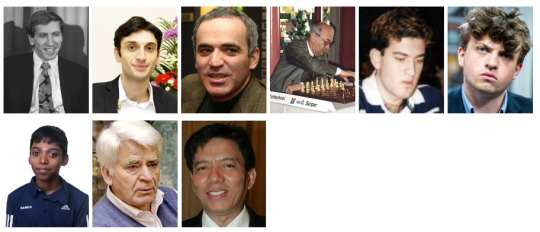
ISTP Kirill Alekseenko, Juan Manuel Bellon Lopez, Bobby Cheng, Gukesh Dommaraju, Alexander Grischuk, Anatoly Karpov, Javokhir Sindarov, Andrew Tang, Maxime Vachier-Lagrave, Jorden Van Foreest, Wei Yi

9 notes
·
View notes
Text
A Season for Family
Premieres Wednesday, Nov. 22 at 8 p.m. ET Starring Brendan Penny, Stacey Farber, Benjamin Jacobson, Azriel Dalman
Maddy's (Stacey Farber) adopted son Wesley (Benjamin Jacobson) has just one Christmas wish -- to meet his brother Cody (Azriel Dalman), who was adopted into a different family. Cody’s father Paul (Brendan Penny) is a widower who is not ready to have this conversation with his son, so he turns down a meeting. However, circumstances bring the two brothers unknowingly together and they become fast friends, while sparks fly between Maddy and Paul.
3 notes
·
View notes
Text
Based on the autobiographical novel, the tempestuous 6-year relationship between Liberace and his (much younger) lover, Scott Thorson, is recounted. Credits: TheMovieDb. Film Cast: Liberace: Michael Douglas Scott Thorson: Matt Damon Seymour Heller: Dan Aykroyd Bob Black: Scott Bakula Dr. Jack Startz: Rob Lowe Ray Arnett: Tom Papa Mr. Felder: Paul Reiser Carlucci: Bruce Ramsay Mr. Y: Nicky Katt Billy Leatherwood: Cheyenne Jackson Tracy Schnelker: Mike O’Malley Adoption Attorney: David Koechner Cary James: Boyd Holbrook Frances: Debbie Reynolds Lou: Eric Zuckerman Assistant Director: Eddie Jemison Director: Randy Lowell Stunt Actor: Tom Roach Camera Assistant: Shamus Cooley Sound Mixer: John Smutny Rose Carracappa: Jane Morris Joe Carracappa: Garrett M. Brown George Liberace: Pat Asanti Dora Liberace: Casey Kramer Assistant Stage Manager: James Kulick Make-up Artist: Paul Witten Gladys: Deborah Lacey Sue: Susan Caroll Todd Backstage Flirt: Austin Stowell Backstage Flirt: Francisco San Martin Stagehand: Anthony Crivello Scott’s Half-Brother, Wayne: Kiff VandenHeuvel Dorothy: Nikea Gamby-Turner June: Charlotte Crossley Liberace’s Attorney: Josh Meyers Joel Strote: Harvey J. Alperin Dr. Ronald Daniels: Jerry Clarke Anchorwoman: Lisa Frantz Health Department Spokesman: Shaun T. Benjamin Priest at Funeral: John Philip Kavcak Young American Dancer (uncredited): Kelly Allen Funeral Mourner (uncredited): Gregg Atwill Patron (uncredited): Greg Baine Guy Outside Casino (uncredited): Brian Blu Party Guest (uncredited): Paul Borst Angie Liberace (uncredited): Barbara Brownell Sex Club Patron (uncredited): Lee Christian Kazarian (uncredited): Kass Connors Showgirl (uncredited): Jacquelyn Dowsett Concert Fan (uncredited): Timothy Skyler Dunigan Deposition Reporter (uncredited): Fielding Edlow French Guy #2 (uncredited): Corey Eid Impossible Dream Dancer (uncredited): Krystal Ellsworth Young American Dancer (uncredited): Kelli Erdmann Hair Stylist (uncredited): Amber Lee Ettinger Young American (uncredited): Derek Ferguson Adult Bookstore Patron (uncredited): Joe Filippone Adult Bookstore Worker (uncredited): Aussie Guevara Dancer (uncredited): Brandon Henschel Young American Dancer (uncredited): Kara Hess Stage Manager (uncredited): Lenny Jacobson Mourner (uncredited): Richard Allan Jones Valet (uncredited): Adam J. Kassel Impossible Dream Dancer (uncredited): Dominique Kelley Cameraman (uncredited): David Dustin Kenyon Theatre Stage Hand (uncredited): Kirk Krogstad Billy (uncredited): Kristin Lindquist Showgirl (uncredited): Rachael Markarian Patron (uncredited): Hugo Pierre Martin Sex Club Worker (uncredited): Paul McDade Young American Dancer (uncredited): KC Monnie Bar Patron (uncredited): Max Napolitano Tailor (uncredited): Gregory Niebel Show Boy (uncredited): Cassidy Noblett Dancer (uncredited): Ryan Novak Young American (uncredited): Meredith Ostrowsky Sex Couple #1 (uncredited): Lance Patrick Liberace Showgirl (uncredited): Brittany Perry-Russell Dancer (uncredited): Ferly Prado On-Air News Reporter (uncredited): Mike Jerome Putnam Maitre d’ (uncredited): Thure Riefenstein Second Anchorwoman (uncredited): Stephanie Maura Sanchez News Reporter (uncredited): Jimmy Scanlon French Guy #1 (uncredited): Roby Schinasi Reporter (uncredited): Nellie Sciutto Bookstore Patron (uncredited): Franklin J. Sterns Startz Surgeon (uncredited): C.J. Stussi Showgirl (uncredited): Becca Sweitzer Stagehand (uncredited): Trace Taylor Stagehand (uncredited): Anna Wendt Print Reporter (uncredited): Ryken Zane Nightclub Patron (uncredited): Judy Bruno Bennett Bookstore Guy (uncredited): Cal Rein Reporter (uncredited): Brian Neil Hoff Young American Dancer (uncredited): Nick Lanzisera Mourner (uncredited): Charles Moniz Showgirl (uncredited): Ayesha Orange Young American Dancer (uncredited): Jason Williams Self (archive footage) (uncredited): Johnny Carson Self (archive footage) (uncredited): Peggy King Film Crew: Editor: Steven Soderbergh Screenplay: Richard LaGravenese Book: Scott Thorson Book: Alex Thorleifson Producer: Susan Ekins Fir...
#based on memoir or autobiography#based on novel or book#based on true story#celebrity#gay theme#in the closet#las vegas#Top Rated Movies
0 notes
Video
vimeo
Because the Origami - 8in8 from Ben Jacobson on Vimeo.
This song was written and recorded by 8in8 one night a couple of weeks ago - amandapalmer.net/blog/we-made-a-record-and-its-out-8in8-nighty-night/ - 8in8 comprises of Neil Gaiman, Amanda Palmer, Ben Folds and Damian Kulash.
They released it under a CC license in the hope that people would make videos for the tracks. We loved this song so much that we were inspired to make this fan video - it just took a while getting the correct props together. Hope you enjoy it - we had so much fun making it.
Featuring Holly Jacobson - hollyjacobson.co.uk
Directed, Shot and Edited by Ben Jacobson Assisted by Benjamin Davis Produced by Kaley Jacobson
Special thanks to all our friends who helped with props - and especially to Harry the pony.
Shot on 60D with Cinestyle profile throughout (very minimal grading except applying the LUT) - I love the look this profile gives. Lenses: Tokina 11-16 2.8, 50mm 1.4, 100mm macro 2.8
More info on the making of this video at: benjacobson.co.uk/origami_music_video/
Winner of Best Music Video at Screen Stockport Film Festival 2011
0 notes
Text
Mystery on Mistletoe Lane
Mystery on Mistletoe Lane (2023) #AllanHarmon #VictorWebster #EricaCerra #FredHenderson #MaryBethManning #JulietteHawk Mehr auf:
Jahr: 2023 (November) Genre: Mystery Regie: Allan Harmon Hauptrollen: Victor Webster, Erica Cerra, Fred Henderson, Mary-Beth Manning, Juliette Hawk, Logan Pierce, Gardiner Millar, Benjamin Jacobson, Diana Smendra, Jeanie Cloutier … Filmbeschreibung: Neu in der Stadt entdecken Heidi Wicks (Erica Cerra) und ihre Kinder Annie und Garrett (Juliette Hawk und Logan Pierce) ein Weihnachtsgeheimnis…
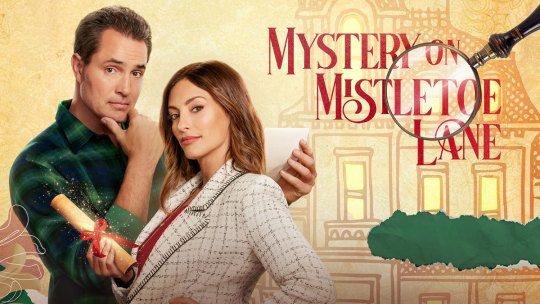
View On WordPress
0 notes
Text
Cuyp's Young Herdsmen with Cows
Welcome to Long Live Bat Art, the podcast for art lovers who don’t see art as much as they want to. My name is Sydney and thank you for taking this slow tour through an art gallery with a casual art lover. Today, I’ll be talking about Young Herdsmen with Cows by Aelbert Cuyp. I hope you enjoy.
Aelbert Jacobszoon Cuyp was born on October 20, 1620 in Dordrecht, which boasts the claim to fame as being the oldest city in Holland. His father, Jacob Gerritszoon Cuyp, was also a painter. And I’m actually sad that it took me this long to figure out that ‘szoon’ might mean that your middle name is your father’s name plus ‘szoon,’ like how your last name in English used to be your profession or father’s name with 'son'. Think of it as ‘Jacobson.’
Cuyp comes from a family of artists- his uncle Benjamin and grandfather Gerrit were stained glass designers. Because of their work, Cuyp inherited a ‘considerable fortune.’ But how much he inherited is somewhat of a mystery- even my nemesis Arnold Houbraken didn’t touch much on Cuyp’s artistic career, even though he was the sole authority on the man for a hundred years. I don’t know about you, but if I was the sole authority of something, I might give it a bit more research.
Cuyp’s works were mainly produced between 1639 and 1660. He married a woman named Cornelia Bosman on July 30 in 1658, which coincided with the tail end of his career. Most biographers blame her for ending his career, but it could be that Cuyp decided to focus on his wife and being a family man for his daughter on his own.
Cuyp’s career can be broken into 3 periods, based on what artist was believed to have influenced him. The unimaginative names of his periods are his ‘van Goyen phase,’ based on Jan van Goyen, his ‘Both’ stage of Jan Both, and his father’s influence. I don’t know if historians called it ‘Cuyp’s Cuyp phase,’ but if they did it would have been funny. He mainly learned color from van Goyen, light from Jan Both, and form from his father.
You might recognize Jan van Goyen’s name from episode 2- he was a teacher and later father-in-law of Jan Steen. Cuyp may have encountered van Goyen’s work around 1640. Historians think that because two of Cuyp’s paintings, both dated 1659, show that Cuyp hadn’t yet discovered his style. Paintings in 1641 that he collaborated on with his father where Aelbrecht did the landscape and Jacob the figures that are accepted as ‘van Goyenesque.’ The colors and brushstrokes are similar in appearance to van Goyen’s Dunes he painted in 1629. The brushstrokes are generally accepted as being precursors to impressionism, which is known for visible brushstrokes.
Jan Both lended his light source to Cuyp. Instead of having the light be at a right angle, it instead emanates from the background. That change meant that new degrees of depth could be achieved. Cuyp was one of the first Dutch artists to latch onto the technique that Jan Both brought back from Rome. Cuyp used the technique for sunrises and sunsets.
Cuyp’s influence from his father was less time-based, instead woven throughout his entire career. Instead of being a pure landscape painter, he learned figures from his portrait painter father. Both father and son had rather fluid styles, each taking inspiration from the other, which frustrates historians and pleases me. It’s a lovely idea, the fact that you can take inspiration from someone that was inspired by you and have it be playful. You are not stagnant, nor should you be. The fact that you’re a human means you are constantly growing, and growing means change.
Unlike some of the artists we’ve covered this season, Cuyp often signed his works. While he dated some of them, the majority are left undated. Unfortunately, another artist who did similar landscapes- Abraham Calraet- had the same initials that could be confused with Cuyp’s. So some of Calraet’s paintings could be misattributed to Cuyp, and vice versa. Calraet was also an avid follower of Cuyp, which adds to the confusion. Cuyp also had a workshop, and artists would add his initials to paintings he never touched in reference to who the artist’s teacher was. In fact, Hofstede de Groot cataloged 800 works to Cuyp in the early 1900s. However, by 2002 the number had diminished greatly to 45 paintings and the same number of drawings.
On to the painting.
The painting depicts a grassy hill with a river on the left and below. On the hill are five cows, all with horns. The cow closest to the viewer is brown with a white face except for its cheeks. It’s lying down and is lit from the left and above. The next cow is black and standing, looking over the water. It has a small patch of white along its left jawline, which is facing the viewer. It also has a low white sock marking on its back left leg. Its bones are slightly more prominent than the closer cow- its hips are pronounced and you can see the dip before its shoulder blades, along with its ribs. The next cow is also black. It has a white marking between its eyes. It’s lying down and almost facing the viewer. It has a light gray marking around its nose. The next cow is a lighter shade of brown than the first one, and its face is entirely white. The white cuts off in a line down from just in front of its horns. It’s laying down the same way as the others, with its tail and lugs tucked under itself. The last cow is also lying down and is a rich brown, almost red color.
Behind the last cow are two young men. One is wearing a straw hat that looks like the stereotypical farmer’s hat, and the other is wearing a black beret, longer on the right side. The young man wearing the straw hat is wearing a blue shirt with a square white covering from his head down his shoulder blades. The covering doesn’t go over his arms. His legs are obscured by the cows, but he seems to be sitting on a rock. The other young man is standing and holding a staff in his left hand. He’s facing the other man and talking with him, using his other hand to point at him, emphasizing whatever he’s saying. He’s wearing a long brown garment with a white shirt underneath you can just see the collar of. His legs are also obscured by the cows.
There’s another straw hat next to the first man- whether it’s the other man’s or a third man sitting on the ground I can’t tell.
In the foreground is low vegetation- thin branches with small ivy-like leaves and a larger but still low plant with large leaves on the right. The larger plant’s leaves are spreading from the center like a lily’s petals. There are five of them, all rippled at the edge. There’s a rock among the branches on the left.
In the background, beyond the river, is another piece of land. It’s more mountainous with trees along the bank. The sky is light. It’s blue on the upper right corner and a subtle orange transitioning into pale yellow beyond the mountains, like the sun is rising. It has a cloud along the right side, above the men and cows. The cloud is light gray and broken up, showing the sky in parts. A sunbeam is cutting diagonally from the middle of the top edge of the painting and towards the bottom right of the cloud. There’s a bird, maybe a white goose, flying overhead.
Now for my thoughts.
I like the lighting in this piece- it’s soft and golden. There’s a wide shaft of light coming through the clouds and it’s just absolutely gorgeous. The cows seem healthy and robust, at least from an admittedly never-seen-a-cow-in-real-life person. And the way the black cow is looking over the scenery, it’s almost like it’s admiring the view as well. I know bears can do that- there’s been instances of people seeing bears sitting back and enjoying beautiful things. Humans aren’t the only ones who can admire beauty for the sake of it.
The whole scene is just a peaceful one. The cows are relaxed, the herdsmen are chatting. I don’t know what drew me to this piece, I really don’t. It has nothing to do with my life- I’ll probably never bring cows out to a hilly area to graze as long as I live. But that doesn’t mean I can’t appreciate the simplicity of that idea. Yes, herding is probably a rough life- moving animals that are much larger and stronger than you is probably stressful- but right now, animals and humans are relaxed. And they do as most animals and humans do when relaxed- they both rest their legs and humans talk.
The fact that this scene is the one Cuyp chose to be his subject might be a practical one- he could have had more access to herdsmen or life experience to draw from- but I like to think that there’s something deeper there as most artists do choose with hidden agendas. Maybe Cuyp chose this view because it’s a common one, maybe he chose it to show others what his life or those of his subjects are. Maybe he wasn’t even aware of it. I know I’ve made pieces of art that I thought were interesting for different reasons than other people that saw them. The person experiencing the art and the artist often have very different views. The artist might have created from their own experience, but the viewer also brings their life experience with them when they view the art. My life experience is vastly different from Cuyp’s and his audience’s, so I probably see it very differently.
But that’s fine- you don’t have to precisely ‘get’ the artist’s vision. You might look at a piece of art and see something the artist never intended, or they might create something you’ll never think of. The artist and the viewer have both a symbiotic and antagonistic relationship. Symbiotic because there can be no art without an audience and vice versa. Antagonistic because often artists will create something that the audience won’t see at first, or maybe even ever. But that doesn’t have to be a bad thing. You can’t see anything other than what your own experiences let you, but that doesn’t mean you shouldn’t try.
So that’s my challenge to you- try to see from another person’s experience today. I know, I just said that was impossible, but it’s a worthy exercise. As one of my favorite books- To Kill A Mockingbird- advises, try to climb in his skin and walk around in it for a while. Unless you’re Hannibal Lecter, I don’t suggest that literally. In fact, even if you are Hannibal Lecter, I strongly suggest you don’t do that literally.
So try to see life from their perspective. A family member, a friend, anyone. A stranger, even. And, if you can, try to pick someone vastly different from yourself. I don’t mean pick someone rich and famous, that will bring you nothing but envy and depression. Nor do I mean pick someone from the very bottom of the so-called social hierarchy. That will bring you nothing but pretentiousness. Try someone more on your level.
But trying to see from another person's perspective, to remember that you are not the center of the universe and not everything should revolve around you, is a humbling experience people should undertake more often. You might be the center of your own universe, but so is everyone else. There are no background characters in life, everyone is the main character in their own story. And if you remember that there’s no such thing as an ensemble role in life, I would bet you’d appreciate your own a lot more.
If you liked this episode of Long Live Bat Art, please consider telling a friend and reviewing to help the podcast grow. A link to the transcript of this episode is available in the show notes below. And you can follow me on Twitter at Long Live Bat Art and tumblr at tumblr dot com forward slash Long Live Bat Art. That’s Long Live B-A-T Art. Thank you for listening to this episode, and I will see you in two weeks.
0 notes
Text
Hello Bridgerton fans (and fellow writers) alike! I need your help.
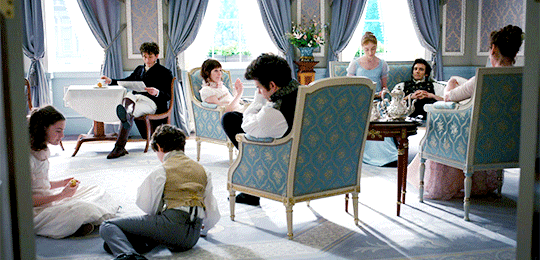
I would like to and am currently writing a piece (a screenplay if you would like specifics) inspired by Bridgerton. I’m still writing most of it so I only have a little bit of a summary to share at the moment. The only problem is, I am not sure how to even write the piece without feeling like I am copying Bridgerton.
I LOVE Bridgerton and I have no intention of copying it at all, but to rather put my own spin on it. I do NOT want to copy it at all by any means, so that’s where I am asking for your help by giving me any feedback and/or advice and/or ideas you may have.
For some context…
My story follows the main characters Collin Westbrooke, the oldest son and a duke in waiting with his father dying, and Alice Primbury, who has suddenly returned to the town (I haven’t thought of a name yet LOL). However, paralleling Bridgerton, Collin also has many siblings that also have their own stories to share: Benjamin, Thomas, Cordelia, Louise, and Clara (in order of oldest to youngest).
My first cry of help would be how to express the siblings stories without copying Bridgerton. It is not my intention at all, and I know I walk on a fine line by focusing on the siblings too just as Bridgerton does, but I promise you I am trying to put my own spin on it. Any advice would be greatly appreciated! (if this blows up I will make a post in depth about all the siblings)
However, Collin does not own up to these duties and instead drinks or sleeps around. With his father’s condition worsening and not expected to live much longer, Lady Ada Westbrooke — a no nonsense and a highly regarded woman — beckons her son to marry and finally start owning up to being a duke.
Meanwhile, Alice Primbury has returned to town in search of a husband. As the youngest Primbury daughter, her mother and newly widowed Lady Rose Primbury, has been waiting on her long enough, as Alice is the only one of her children who has not yet been wed. Alice approaches this with open arms and an open mind but becomes dejected after she discovers that either no one wants her or no one respects her, for how can she have a future with someone if their is no friendship or respect? However, her mother basically calls her expectations unrealistic and gives her until the end of the month to wed or she would find someone for her. On top of this, rumors about Alice begin to circulate around. Why is she back in town? How is she doing now after everything?
Skip to Lady Bernadette’s soíree, and we finally see Collin and Alice cross paths and share a dance with one another, where they both find to share a mutual hatred for one another.
At Lord Jacobson’s ball, Alice discovers Collin’s situation with his father and realizes that he is also in need of a suitor/wife just as she is. As much as she hates him, she decides to strike up a deal with him, as it could benefit the both of them.
This is my next cry for help. In my story, since they’re both in need of suitors, Alice is having no luck in finding one and Lady Westbrooke will not leave Collin alone about the matter, they agree to pretend to be in love and have Collin court her with the hopes of both of them attracting suitors and call of the whole thing once they do (they have until the end of the month to do so). Obviously, this very clearly is heavily inspired by Bridgerton, so any advice on how to not deliberately copy Daphne and Simon’s agreement scene would be very helpful.
Then the story continues with them hating each other as Collin “courts” her — typical enemies to lovers trope falls into place. Collin’s siblings have their stories play out as well. Collin and Alice begin to attract attention and a few potential suitors step forward to gain Alice’s attention. Collin, however, holds off on finding one as he continues to “court” Alice for reasons even unbeknownst to him. Maybe it could be because he’s slowly falling for Alice as they start to bond over art and the stars.
Another cry for help: like in Bridgerton, Daphne gains attention of other potential suitors and I don’t want to do it in the same way, so if there’s anything I could do to not copy it or anything you would like to see then advice would be greatly appreciated. In my story, Alice hasn’t found anyone she has clicked with or found anyone that respects her or her interests, but still.
I’m sorry for skipping around, there’s some gaps I haven’t written in yet.
Then, Lord Anthony Carlisle, an old friend of Lord Michael Jacobson (who is an old friend of Collin’s), arrives into town for “business”.
Next cry for help: I don’t want to copy the Prince from Bridgerton by any means. In my story I’m making Lord Carlisle a writer sent into Alice’s town to discover the real story about her, as she has been quite the talk. However, much like Simon, Collin becomes extremely jealous and I am desperately trying to avoid copying the same things, so if there’s anything you want to see or any advice you can give, that would be great.
After meeting Alice in a wrong-address situation, he has his sights set on her. If he grows close to her then he can get the full story.
That is about as far as I have gotten, but I am planning to make this a television show script (ANOTHER cry for help because Bridgerton is a television show too but I know I can’t fit all of this into one movie 😭). I plan to end the show on a cliffhanger if possible where she will have to choose between either Collin or Anthony at the annual Westbrooke ball. The siblings also face their own trials too, such as in the love department (most of them do LOL), etc.
Any ideas, advice, or even feedback would be amazing. Again, I am not trying to copy Bridgerton by any means, so I figured by posting here and asking for advice I could help work around it and make it seem like I gained inspiration from it instead (I don’t think I’m copying it too much but I don’t want to get cocky, not that I want to copy it but you get the gist) ( the end goal is to NOT copy it, I would never do that intentionally!)
#bridgerton inspir stori#bridgerton#bridgerton netflix#writer things#writerscorner#my writing#writeblr#i am not trying to copy bridgerton#please don’t cancel me#i love bridgerton with every bone in my body i would never intentionally copy it#any advice or feedback is greatly appreciated#writblr#writers on tumblr#writerscommunity
1 note
·
View note